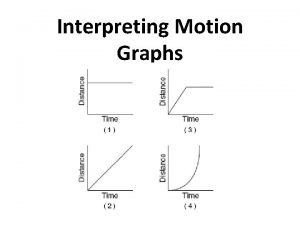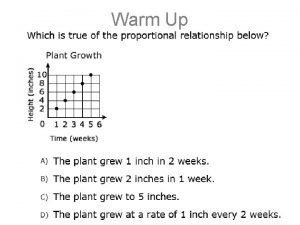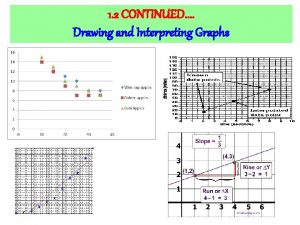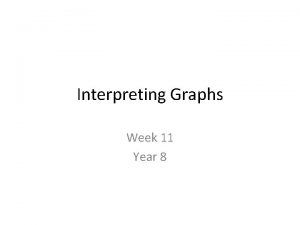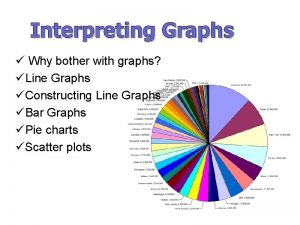Interpreting Graphs I can interpret information from graphs













- Slides: 13

Interpreting Graphs - I can interpret information from graphs - I know to check the axes to determine the quantities being measured and the scale

Filling flasks 1

Filling flasks 2

Interpreting the shapes of graphs Smudger eats a bar of chocolate. This graph shows how the mass of the chocolate bar changes as it is eaten. Mass of chocolate (g) 150 Eating a bar of chocolate 100 50 0 0 10 20 30 40 50 60 70 80 90 100 Time (seconds)

Interpreting the shapes of graphs Temperature of water This graphs shows how the temperature of the water in a pan changes when frozen peas are added. Time

Which graph is correct? In an experiment a group of pupils poured water onto a sponge and weighed it at regular intervals. Each time the sponge soaked up all the water. Volume of water (cm 3) Graph C Mass of sponge (g) Graph B Mass of sponge (g) Graph A Mass of sponge (g) Which graph is most likely to show their results? Volume of water (cm 3) Graph D Volume of water (cm 3)

Sketching graphs A group of pupils are conducting an experiment. They fill three beakers with boiling water and record the temperature of the water over time. The temperature graph for beaker A looks as follows: How would the graphs for beakers B and C compare to this? Temperature (o. C) Beaker A has no wrapping, Beaker B is wrapped in ice and Beaker C is wrapped in insulation fibre. Beaker A Time (minutes)

Sketching graphs

Matching graphs to statements

Distance-time graphs In a distance-time graph the horizontal axis shows time and the vertical axis shows distance. For example, this distance-time graph shows a journey. distance What does the slope of the line tell us? The slope of the line tells us the average speed. The steeper the line is, the faster the speed. 0 time

Label the distance-time graph

Olympic swimmers

Information Graphs • On information graphs, always look to see 1. What information each axis gives (label) and 2. What one square represents (scale) • When describing a graph you need to state: 1. The distance moved (travelled) 2. The time taken to move 3. The speed (rise/run) 4. The direction of travel (away from or towards) FOR EACH SECTION OF THE GRAPH!
 Distant time graph
Distant time graph Interpreting circle graphs
Interpreting circle graphs Interpreting graphs science
Interpreting graphs science Interpreting distance time graphs
Interpreting distance time graphs Lesson 10 interpreting graphs of proportional relationships
Lesson 10 interpreting graphs of proportional relationships Interpreting graphs of functions
Interpreting graphs of functions Interpreting linear graphs
Interpreting linear graphs Enzyme activity graph
Enzyme activity graph Tomer owns a daycare
Tomer owns a daycare What is the average velocity of the object
What is the average velocity of the object Drawing and interpreting graphs
Drawing and interpreting graphs Interpreting circle graphs
Interpreting circle graphs Interpreting line graphs year 5
Interpreting line graphs year 5 Creating and interpreting distance time graph
Creating and interpreting distance time graph
